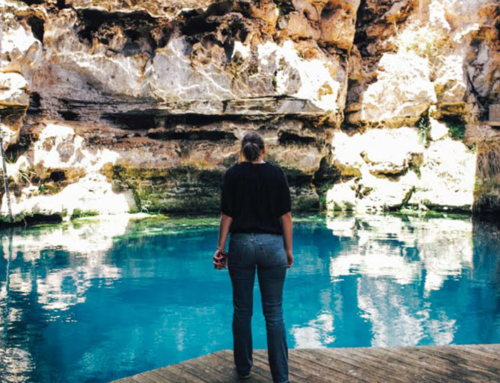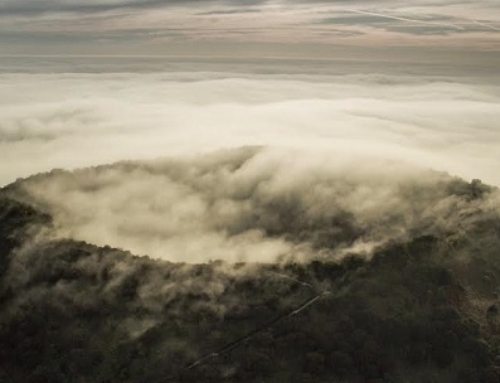27 April 2019 – 16 June 2019
This weekend, the Riddoch Art Gallery will be launching their new exhibition – Interpretations, from the Riddoch Collection. Curated by Riddoch Art Gallery Director Dr Melentie Pandilovski, the Riddoch presents various aspects, contexts, and interpretations of its acclaimed art collection in this eclectic exhibition.
Join Dr Melentie Pandilovski for a free TALK & TOUR of this exhibition on Saturday 27 April at 12pm.

Johnny Skinner Utopia, Central Australia Plum Dreaming c. 1986 Synthetic polymer paint on canvas Gift of Rodney Gooch, 1998.
Interpretations – from the Riddoch Art Collection represents a part of the greater conversation brewing about the importance of collections, and a timeless ideal of visual presence and meaning from different circumstances, all the while revising and reconsidering the initial paradigms of modern art.
In fact, the Riddoch Art Collection has of over 1500 items, valued at $3.5 million. It represents more than 130 years of collecting practices by numerous directors, curators, trustees, board members, patrons, the Riddoch Foundation, the Friends of the Riddoch, the Briar Art Trust, and donors. Donors such as Peter Rymill and family, Margaret Scott, Rodney Gooch, the Edkins family, Brian and Sue Page, Elizabeth Kernick, Lesley Forwood and Gordon Darling, Paul Greenaway, Christopher Pearson, Jenniver White, Alexandra and Geoffrey Legge, Lynne Frolich, Mary Skeene-Kidman, Peter A. Parsons, Ian Darnton-Hill, Luba Bilu, and other known and anonymous donors.
As galleries are strengthened and defined by their collections. The Riddoch Art Gallery has a unique point of view, carefully shaped in the past 130 years. Mindful of art history, we look ahead to future expansions and novel ways of how the art community experiences exhibitions.
The Collection
The collection is divided into several general areas:
- Contemporary Australian art from artists such as Ian Abdulla, Annette Bezor, Peter Booth, Fiona Hall.
- Works of Indigenous Art from the Utopia Land Collection (donated by Rodney Gooch in 1998): including works from Johnny Skinner, Lindsay Bird; Emily Kame Kngwarreye, Hazel Kngwarreye.
- Works of Art from the Collection of Regional Limestone Coast Artists: Cathleen Edkins, Iris Frame, and Lorry Humphries.
- Artworks from the Institute Collection (assembled in the late 1800’s): Tenison Coles’s Mrs John Riddoch (nee Elizabeth King) of Yallum; Pasquale Romanelli’s ‘Dick Whittington and his cat’.
Defining the Collection…
Twenty works are presented for Interpretations – from the Riddoch Art Collection spanning from the 19th to the 21st century. They provide an entry point into the vast collection, emphasizing major milestones in visual art’s development, various aspects, opposing concepts, contexts, and interpretations of its acclaimed collection of paintings, sculptures, prints, photographs, and drawings. The title of the exhibition refers to past themes and ideas about the collection, as well as the ones that are being actively discussed in the community, supported by the art objects collected during existence of the Riddoch Art Gallery. The artworks include: Johnny Skinner’s Plum Dreaming, Cathleen Edkins’ Summer Flowers, David Aspden’s Sunya, Tenison Coles’s Mrs John Riddoch (nee Elizabeth King) of Yallum, Pasquale Romanelli’s Dick Whittington and his cat, Lindsey Bird Mpetyane’s Ancester Ceremony, Peter Booth’s Untitled Landscapes, as well as the new acquisitions: Paua New Guinean artist Mathias Kauage’s Minister Mindi is Arriving in a Helicopter, William Robbie’s Brown’s Lake/Leg of Mutton and Blue Lake (on loan to the Riddoch Gallery), Anette Bezor’s Entanglement Landscape.
It is important to say that the exhibition goes beyond that, and that it ensures the presentation of important art reflections on historical events and the social/community dynamics in the Limestone Coast area, South Australia and nationally. Through presenting works of art from the Boandik peoples past, the Victorian period, modernism, and post-modernism, the collection also touches on the creation of our contemporary identity.
These collected and presented art objects, also point out to the inherent, ever present thingness, or object-hood of things, allowing for our interaction with the presented art objects, laden with historical and cultural references, and their influence upon us in return. Our interaction with them becomes essential as artworks become instrumental in regard to our understanding of the world. The process of constructing our world view, a way of thinking, when facing objects, becomes immensely important, allowing us to create new concepts for novel objects.
The collection also touches on philosophical questions of being in this time and space. Believing in the saving power of the arts. German phenomenologist Heidegger called for the second beginning of thinking and the meeting of the world in historical time-space which can only be built by art. The collection makes visible the artistic, sociological, political histories, and generally the concept of cultural memory, thus allowing us to see the role which art has had in this process, and further understand the transformation through which we are going as a community. Collections are important as they provide an insight into the past, but also enable society to sense the possible futures by looking into the art that is being currently curated. McLuhan wrote in the sixties that ‘art at its most significant is a distant early warning system that can always be relied on to tell the old culture what is beginning to happen to it. He further added that the artist has had the power – and courage – of the seer to read the language of the outer world and relate it to the inner world. … It’s always been the artist who perceives the alterations in man caused by a new medium, who recognizes that the future is present, and uses the work to prepare the ground for it.’
Agreeing with those prophetic lines, we remain committed to identifying new ideas and concepts for the representation of our collection, including a Comprehensive Cloud-based Database which we have started to develop for the Riddoch Art Collection.

Written by the Riddoch Art Gallery Director, Dr Melentie Pandilovski
1 Bay Road, Mount Gambier SA 5290
Phone: 08 8721 2563
www.riddochartgallery.org.au



